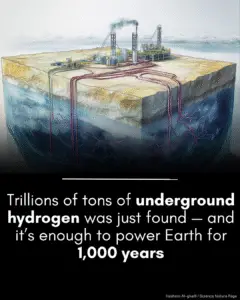why this is necessary?
They say
“but surely at interview I can show my strengths and I will get the job”.
Why a good CV gets you the job
This may be true but what happens if an employer looks at your CV and doesn’t invite you in to interview? In todays fast paced world hiring managers make decisions about whether a candidate looks suitable from a quick scan of the CV so you have to make sure that yours conveys all the relevant information concisely.
 |
| Tips to Write a GREAT CV for Civil Engineers |
The common mistakes of CV writing
The main mistakes people fall into are in the following categories
- Not enough information
- Too much information
- Formatting that confuses
- Too long
Luckily these are easy CV writing mistakes to rectify and once you have them mastered you’ll find that you get invited to interview more often and that you will be able to achieve a higher salary. We’ll show you how below but first let’s just state what a CV is there to do.
A CV’s sole purpose is to highlight your skills and convince a hiring manager that you can do the job so that he/she brings you in to interview!
Like Us on Facebook!
Subscribe Us on YouTube!
Bearing that in mind lets address our common mistakes
Not enough information – Simple,add more information, but make sure the information is pertinent to your career. Information that should be added isabout the companies you worked for and the role you did there followed by the projects you individually worked on and your specific contribution on those projects.
Too much information – Also know as waffle! Consider the information highlighted above and cut it down to the minimum. We don’t need to know that you worked with Andy and that you formed a brilliant partnership, we need to know about you, where you worked and what you did.
Formatting – Keep it simple here too, follow the structure I’m about to outline, stick to one font at one size and use bold to highlight bits that need highlighting. Using any colour apart from black is a definite no-no!
How to structure your CV to get the job
So we’ve covered what goes in it now lets look at how to present it to make it easy to read. The basics are again keep it simple and let it flow. I’ve laid this out as it should be on the CV with the correct formatting (see the bold and undelines) so you can copy and paste into Word.
Start at the top with your contact details, Name, email, phone number. No more and no less. If you’re in a country where age discrimination isn’t prohibited then they may ask age. In the EU it is illegal to do that so don’t add it.
Personal statement:
A paragraph of three or four sentences about who you are and where you want to get to in your professional life. Do not talk about personal stuff here! Employers don’t care if you have kids, a beautiful wife that you met 30 years ago. They care that you can do the job only write professional information here. Refer to the statement of what your CV is here to do above if in doubt.
Employment history
Company Dates worked (include Months)
Job title
We have a couple of paragraphs here to describe to the hiring manager what you have done and the mistakes we talked about above come into play. You need to describe three things in this part and they are.
(Start with the most recent first and work backwards. Include all jobs you have done (if you have a long career then the further back you go the less relevant they are so you can cut down on the information to keep the CV concise).)
- The company you worked for: What they do, how big they are (money and locations).
- What your role was in the company: Responsibilities, seniority
- Projects you worked on and responsibility there.
An example of a good CV would be:
Mott MacDonald Jan 1999 – Mar 2011
Senior Bridge engineer
Mott MacDonald is a global engineering design and management company that work on iconic projects in various sectors. Currently valued at £1.2 Billion they have offices in 140 countries.
Working in the bridge engineering department I was responsible for design calculations, project management and the mentoring of junior engineers along with making sure technicians produced engineering drawings.
Projects I was involved with:
- The Golden Gate bridge – A two mile long cable stayed bridge in San Francisco where I designed the girders, and cable fixings
- Bridge over another river – A 1200 meter long multi span concrete bridge where I designed the piers
- Another project here
Projects added should be in order of importance and they should highlight all your skills. Don’t list hundreds though, just enough to demonstrate your skills.
If you read the above you now have a pretty good idea of what I have been doing which is the ultimate goal of a well written CV.
Education
Then you need to add your Education, only tertiary qualifications as no one wants to know about how well you did in kindergarten. Laid out like below:
University name Course taken
Dates of study Qualification
Articles / Research
If you’ve published articles or written research papers then add them.
Computer Programs
Add specialist computer programs you have used. Just bullet point them
Finally add your personal interests: This is the only place you should add anything about your personal life so add a short paragraph here.
The final tip is that if possible keep your CV to two pages. If you’ve had a long career or have been a contractor then that maybe difficult so the rule can be broken for things like that. But beware about straying because people don’t have the attention span to read long documents. They will make a decision about whether to interview you by time they have finished the first two pages so make sure these pages are loaded with all the correct info.
If it does get too long or if you really want to highlight projects then consider taking out the detail of the projects and adding them to a separate portfolio. Here you can add screen shots of designs, photos of the project, calculation examples etc. Bearing in mind a picture paints a thousand words portfolios are worth millions!
If you have any questions use the comments section below and I’d love to hear any CV writing tips you have that you think I’ve missed.
Good luck in your job-hunting too!
The article is written by Julian, a UK based recruitment consultant with over ten years experience working for headhunters and niche recruitment agents. His experience is all gained in the consulting engineering sector where he helps people from all over the world find their dream jobs. Find your next civil engineering job here.













